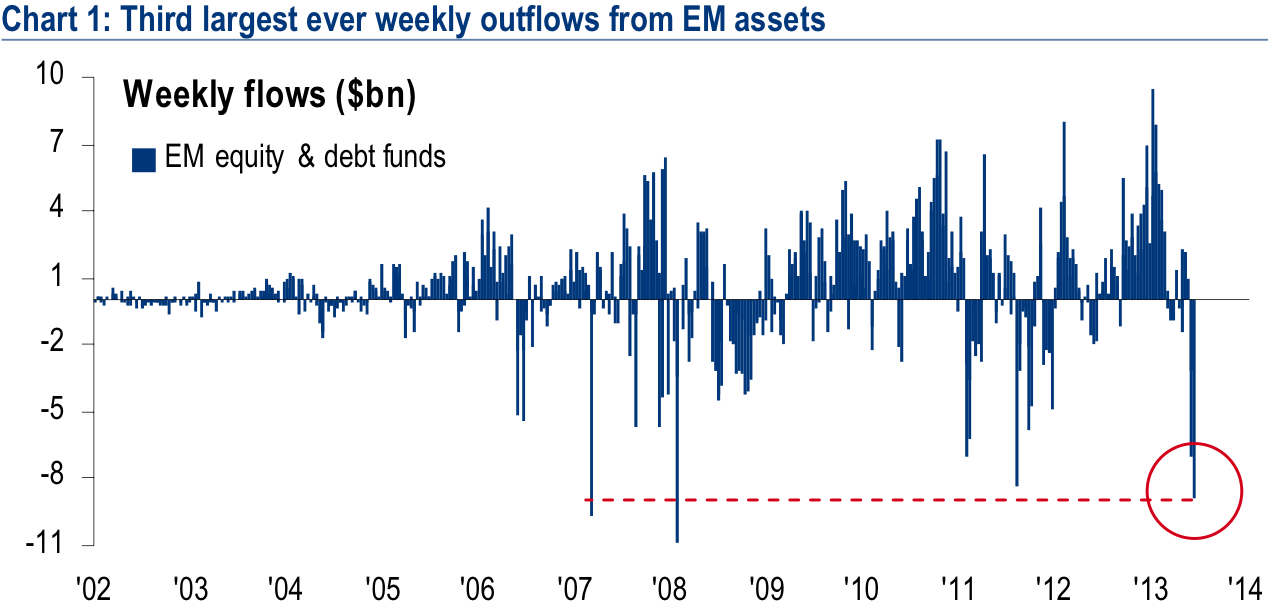Are Emerging Market Bonds Worth the Risk
Post on: 8 Июнь, 2015 No Comment

Trouble in Ukraine continues after Russia annexed Crimea last week, following last month’s ouster of President Viktor Yanukovych. We continue to explore what the ongoing conflict means for global equity markets. The consensus is that there is value to be found in frontier market equities.
On the fixed income side, the market response has been relatively muted. The 10-year US Treasury has traded in a range of 2.6% to 2.8% since the middle of February; we didn’t experience the sharp decline in yields that we normally see when markets get spooked by a significant geopolitical event. Credit spreads, the amount of additional yield that investors require for buying bonds with default risk, have risen slightly in March but have been fairly well contained. Typically large market shocks cause spreads to widen. Measures of market volatility have also not spiked in recent weeks, with the Merrill Lynch volatility index (ML MOVE index ) not moving substantially. Below we can see the MOVE index along with the commonly referenced VIX Index. which measures stock market volatility. Both indices have been trading at the lower end of their recent ranges.
Looking at emerging market debt we see that credit spreads have widened modestly in March, but remain below levels that we saw as recently as mid-February. Markets have reacted most strongly in Ukrainian and Russian debt where we have seen credit default swap (CDS) spreads widen as the conflict has escalated. The movement in these two issuers has driven most of the movements of broader emerging markets (EM). In the bond world, Ukraine is classified as EM, whereas in the equity space, it is a frontier market.
So far we have not seen any contagion in the rest of the EM market. EM fixed income is of course no stranger to volatility, experiencing a tumultuous 2013 thanks to slower growth in China and expectations of normalized rates in the U.S. Starting in May 2013, investors poured out of this asset class, and continued to do so through year end. Discouraging headlines coming from Ukraine, Russia, and other EM countries are keeping flows in negative territory. Year-to-date, outflows from EM bond mutual funds and ETFs total $13.3 billion.
This leaves many investors wondering if EM bonds are worth the risk. We think that it is very important for investors to look separately at USD denominated currency debt and local currency denominated bonds. Of the two we have a preference for USD. Here are two things to keep in mind:
1. USD denominated EM bonds do not have local currency risk. Dollar-denominated means that the EM bonds are issued in U.S. dollar terms, limiting currency risk for the investor. If we look at this sector compared to local currency bonds, we’re seeing that year-to-date performance is positive, thanks to falling U.S. Treasury rates.

2. Local EM bonds have local interest rate risk, along with currency risk. As the name suggests, local currency bonds are denominated in local currencies, such as Russia’s ruble and Ukraine’s hryvnia, and are affected by currency fluctuations. The ruble has declined nearly 10% this year, making it one of the weakest EM currencies YTD, and the hryvnia fell to a record low against the dollar at the end of February. These bonds are also impacted by movements in local EM interest rates. Depreciating currency valuations relative to the USD, coupled with a series of rate hikes in many EM countries, have taken a toll on local currency bonds.
The bottom line is that we expect to see continued volatility in EM bonds, but we believe that USD denominated bonds will hold up better in the current environment. Just remember that not all EM debt is the same, understanding the differences will help you choose the right investment.
Matt Tucker, CFA, is the iShares Head of Fixed Income Strategy and a regular contributor to The Blog . You can find more of his posts here .
Fixed income risks include interest-rate and credit risk. Typically, when interest rates rise, there is a corresponding decline in bond values. Credit risk refers to the possibility that the bond issuer will not be able to make principal and interest payments. International investing involves risks, including risks related to foreign currency, limited liquidity, less government regulation and the possibility of substantial volatility due to adverse political, economic or other developments. These risks often are heightened for investments in emerging/ developing markets, in concentrations of single countries or smaller capital markets. iS-12007














